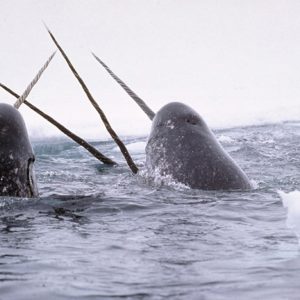Be careful – Turtles Crossing
Do you see signs with a “Slow Down” sign with a turtle on it around where you work or live? Or maybe you see them on your way to the cottage. I’ve encountered a surprising amount of people in my life who have not seen these signs before moving to the area where I currently work.
These signs let you know that the road you’re driving on might run through a turtle habitat. Roads fragment most wetlands in Southern Ontario[1] and these are the preferred habitat of turtles. In the early summer, turtles look for mates and for territory to call their own[2]. Toward the end of summer, baby turtles have hatched and are usually travelling in small packs to find their new home.
It breaks my heart so see so many crushed turtles along these roads. We can easily prevent this and save turtles with a few small measures.
- Slow down. You don’t have to drive like you’re in a school zone when you see these signs, but obey the speed limit and…
- Keep your eyes peeled. Pay attention farther ahead on the road and start slowing down early if you see a small, dark spot up ahead. It may just be a turtle.
- Watch out in marshy areas. It would be redundant to keep posting the same sign intermittently along the road. Turtles tend to cross near marshy areas or small bodies of water.
When you do see a turtle, there are some important things to remember.
- Turtles may carry diseases. Therefore, keep a box of latex gloves in your car. If you ever need to help move a turtle, make sure to wear some gloves.
- Do your best to direct a turtle to a safe area rather than physically moving it. Especially in the case of snapping turtles. With turtles that are on the endangered list, like the Painted Turtle, it is encouraged that you do not move, disturb or pick up the turtle unless it is in immediate danger. If the turtle is found on the road and it is necessary to pick it up, remember to clasp both its shell and its stomach together. Do not pick it up by its shell as this can injure the turtle.
- Report the sighting. Something I just learned about is that you can help monitor the health of turtle populations just by reporting when and where you see them.
- If you see a turtle and there weren’t any signs in the area, request one! Find out more about that here.
- If a turtle is injured, you have contacted a wildlife centre and will transport it to its destination, the Ontario Turtle Conservation Centre instructs us to:
- Put the turtle in a sturdy container (either a cardboard box, or plastic tote)
- Do not feed the turtle or add water – the centre will take care of that.
- Keep the turtle in a safe, cool, dark place so the he/she is not encouraged to move and worsen injuries.
If you see an injured turtle, call a local Turtle Conservation organization or other local wildlife centre for further instructions. Try to keep a number in your phone of a local group if there’s an area you frequent with turtle road signs. If you are in Ontario, the Ontario Turtle Conservation Center is the best place to contact.
Ontario Turtles in 2018
This information was provided to Nature Canada by the Ontario Turtle Conservation centre in Peterborough, Ontario.
To date, as of May 31st 2018 there have been 225 individual turtles that have been brought into the centre. Of the 225, 164 have been admitted to the hospital after being hit by a car. See the table below for the breakdown of turtle species that have been brought into the centre.
|
Species
|
Up to 31 May 2018
|
|
Painted turtle
|
140
|
|
Snapping turtle
|
63
|
|
Blanding’s turtle
|
12
|
|
Map turtle
|
7
|
|
Wood turtle
|
3
|
|
Spotted turtle
|
0
|
|
Spiny softshell turtle
|
0
|
For those in and around the South East and Western Ontario, if you see a turtle that is in need of help, the centre recommends to contact them (705-741-5000) and, if possible, drive the turtle to the centre in Peterborough, Ontario. If the centre cannot find a ride for the turtle to our centre in Peterborough, they will link up with one of their First Response Centres, who have been trained by our veterinarian to provide immediate care, fluids, and stabilization of fractures to injured turtles.



